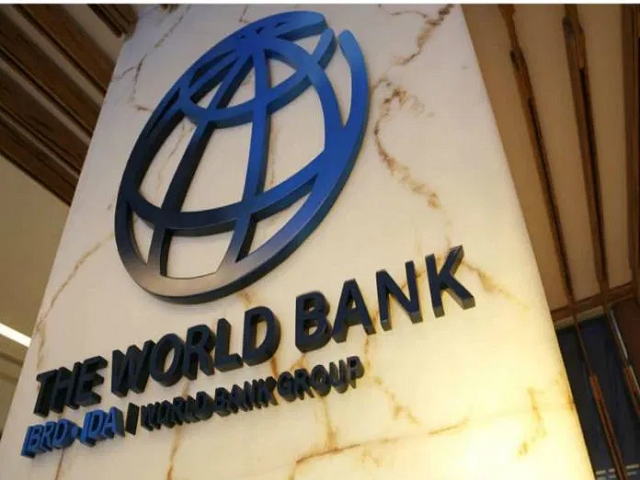The COVID-19 pandemic is predicted to drive up the poverty rate in Nigeria, pushing almost 6 million additional people into poverty by 2022, the World Bank has said
In a report released last week, the bank predicted that there would be 95.7 million Nigerians living below the poverty line by 2022.
The bank stated that without the virus, 90 million Nigerians were projected to be in poverty by 2022. However, the virus would add about 6 million to that figure in two years.
The report stated that: “With real per capita GDP growth forecast to be negative in all sectors in 2020, poverty will deepen for the current poor, while those households that were just above the poverty line prior to the COVID-19 crisis will fall into poverty.
“Were the crisis not to have hit (the counterfactual scenario), the poverty headcount rate would be forecast to remain virtually unchanged, with the number of poor people set to rise from 82.9 million today to 85.2 million in 2020and 90.0 million in 2022 due to natural population growth.
“Given the effects of the crisis, however, the national poverty headcount rate is instead forecast to jump from 40.1 percent today to 42.5 percent in 2020 and 42.9 percent in 2022, implying that the number of poor people will be 90.2 million in 2020 and 95.7 million in 2022.
‘Thus, taking the difference between these two scenarios, the crisis alone is forecast to drive an additional 4.9 million people into poverty this year, with an additional 5.7 million people living in poverty by 2022.”
The report stated that a disproportionate share of those pushed into poverty by the COVID-19 crisis would likely be those living in urban areas and earning income from services.
The bank further predicted that: “More than one-third of the additional people forecast to be pushed into poverty by the COVID-19 crisis are expected to be in urban areas, while just 15.9 percent of the current poor are urban dwellers.
“Only 13.1 percent of the additional poor people in 2022 are predicted to be in households where the head works primarily in agriculture, while, today, 56.0 percent of poor Nigerians live in agricultural households.
‘Many Nigerians who are not poor today are vulnerable to falling below the poverty line during the COVID-19 crisis. People living only just above the poverty line are more susceptible to becoming poor when shocks occur. Those with consumption levels between the poverty line and 1.5 times the poverty line may be defined as ‘vulnerable’”.
According to the bank nationally, 40.1 percent of Nigerians (82.9 million people) live below the poverty line, while another 25.4 percent (52.6 million people) are vulnerable by this definition.
It noted that in rural areas, more than three-quarters of the population were either poor or vulnerable, yet even in urban areas— where the poverty headcount rate was far lower at 18.0 percent—around a quarter of the population would be vulnerable to shocks.
The report noted that most Nigerian workers—especially those in poor households—were employed in agriculture or non-farm enterprises, which might be more susceptible to the COVID-19 crisis.
It stated that just 16.8 percent of working Nigerians (12.9 million
workers) were employed primarily in wage jobs, according to the 2018/19 Nigeria Living Standard Survey (NLSS) while around 42.7 percent work primarily in agriculture (32.7 million workers), and 40.6 percent work primarily in non-farm enterprises (31.1 million workers).
The report observed that social distancing measures posed a serious threat to non-farm enterprises that relied on face-to-face interactions with customers, as well as those agricultural workers that needed to buy inputs and sell produce.
It stated that: “Agriculture is particularly dominant for the poor and vulnerable, and wage-employment is limited: only 7.7 percent of poor Nigerian workers (2.0 million workers) work primarily in wage-employment, while 59.3 percent of poor Nigerian workers are primarily engaged in agriculture (15.5 million workers).
“There is also substantial geographical variation in the way that different types of jobs are dispersed across Nigeria, with urban areas in the south of the country having a larger share of wage jobs and agriculture being more concentrated in rural areas and in the north.”
The bank said COVID-19 crisis would threaten Nigerian households’ welfare both through direct health channels—with the illness or death of family members—and at least five economic channels
The report read in part: ‘First, households may lose labor income as vulnerable jobs—especially those in non-farm enterprises, selling agricultural produce, and in informal wage work—suffer as demand contracts and work is disrupted by social distancing measures.
“Household earnings will also be reduced if income-generating members contract the virus. Second, non-labor income sources may decline. For example, remittances will fall if sending households have lower income or if the infrastructure for effecting transfers is interrupted.
“Third, disruptions to markets could increase the prices of key food items, reducing households’ purchasing power, while also preventing agricultural workers from selling their produce.
“Fourth, service delivery may be disrupted by social distancing measures, including the closure of schools. Finally, direct out-of-pocket health expenditures for those households whose members contract the virus will limit expenditure on
other essential items.”
Source: THISDAY














